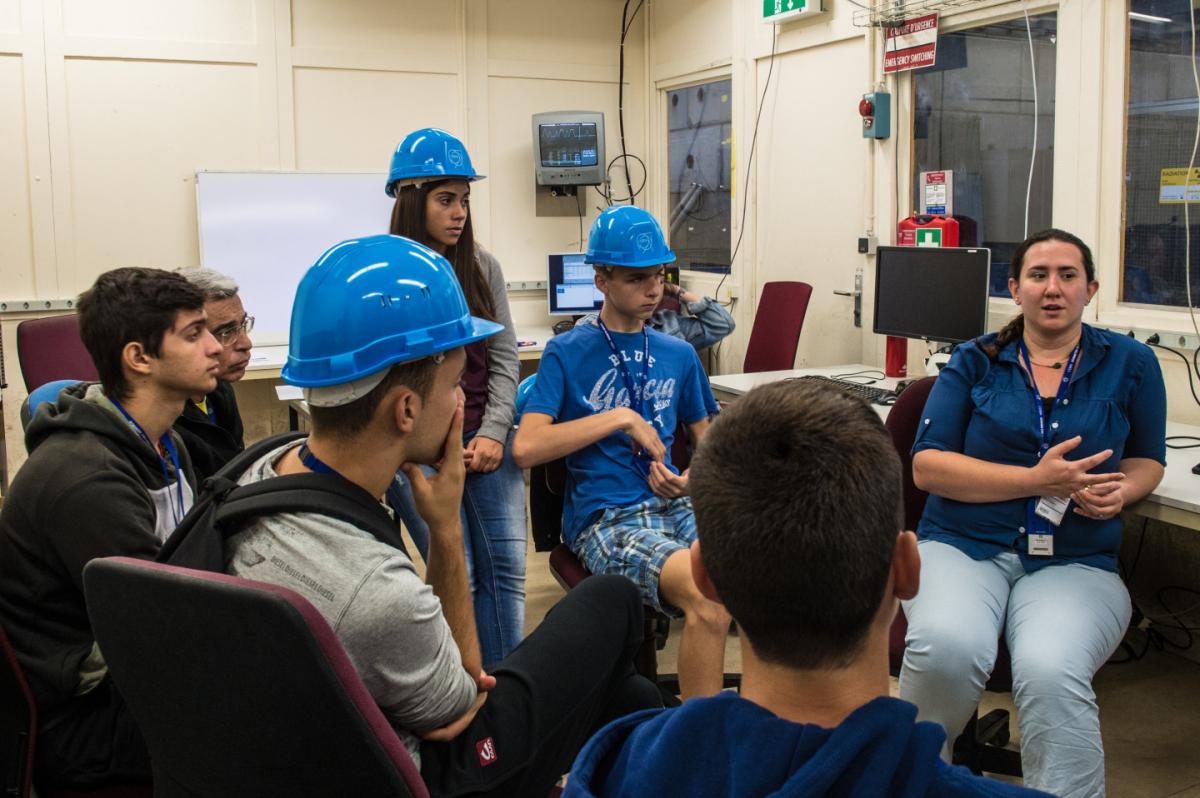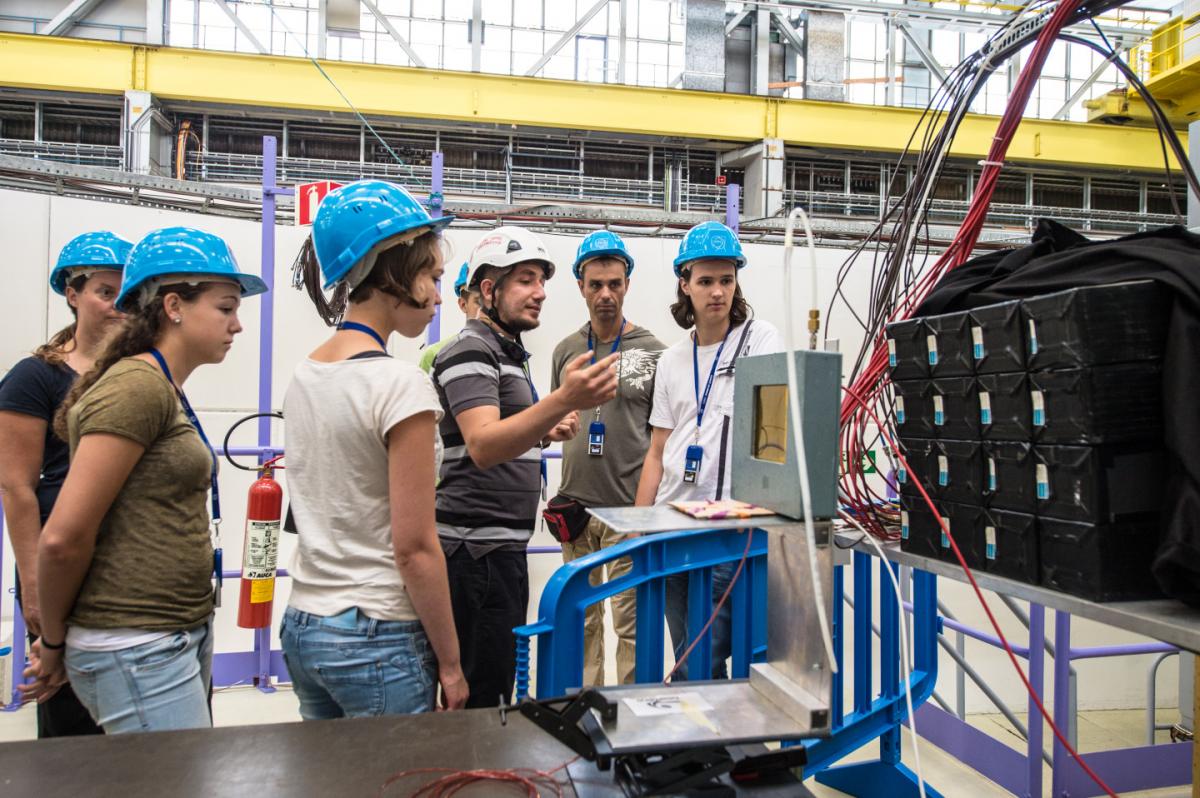Beam time
Out of 292 proposals for CERN's first ever "Beamline for schools" contest, two teams of high-school students – Odysseus' Comrades from Varvakios Pilot School in Athens, Greece and Dominicuscollege from Dominicus College in Nijmegen in the Netherlands – were selected to spend 10 days conducting their proposed experiments at the fully equipped T9 beamline on CERN's Meyrin site. Dedicated CERN staff and users from across departments have put in a huge effort to ensure the success of the project.
It's finally beam time. After months of organization, coding and engineering, the T9 beamline is ready to deliver protons to experiments devised and built by high-school students.
At a planning meeting last week, project coordinator Christoph Rembser discussed his expectations for the students. “They are here to collect data and experience the life of a scientist. I don't want their time here to feel like a planned VIP visit," says Christoph Rembser, the Beam Line For Schools project coordinator. “We will adapt to changes as they come up, just as experimental physicists do on shift and if there is downtime, the students will have a chance to visit CERN installations such as CMS and ATLAS.”
The students' first full day at CERN was devoted to safety awareness and training. The teams learnt to recognize hazard signs and safety protocols at CERN, and members of the HSE department, Cryogenics group and Fire Brigade gave presentations about staying safe at CERN.

Now it's over to the beamline. Now it's over to the beam line. For veteran beams physicist Lau Gatignon, who is instructing the students in basic beam physics, the project is a welcome novelty. “Beams have been keeping me busy at CERN for 35 years, but this is the first time I’ll be working on a beamline with a bunch of 16- and 17-year-olds," he says. "The students are very excited - it’s great to see!”
Detector physicists Cenk Yildiz and Saime Gurduk have spent weeks writing data-acquisition software and preparing T9 to run the experiments. They have been training the students on site in the specifics of data acquisition and taking shifts.
"We are using terminal commands and the Linux system, for example, which may be unfamiliar to the students," says Gurbuz. "But they are very hard-working! They have studied their lessons - when I ask them questions they answer straight away!"

Odysseus’ Comrades – a team of 12 – will look at the decay of charged pions to investigate the weak force. "We wanted something simple but understandable that would be connected to the history of CERN," says team member Konstantinos Papathanasiou (17). "We had to learn a lot of new things, but now we understand the physics necessary."
Dominicuscollege – a team of five – will grow their own crystals to make a calorimeter and test it with the beam at CERN. The team came up with the idea after two students attended a course in crystallography at Radboud University in Nijmegen. “We learnt about x-ray crystallography and crystal structure," says Lisa Biesot (17). "We thought that using crystals for the experiment was a great idea,” says Olaf Leenders (17). Their calorimeter will also be used as a component in the pion-decay experiment.

Physicists, engineers and experts in beams, detectors, data acquisition, data analysis, safety and radio protection from across all CERN departments are helping with the preparations for the experiment and are offering guidance during the experimental phase at CERN.
"The experiments these young students have designed and run are challenging," says Rembser. "I will encourage them to write a paper at the end for the real science experience, but we will have to see how it goes!"